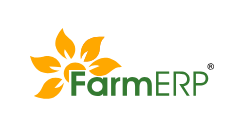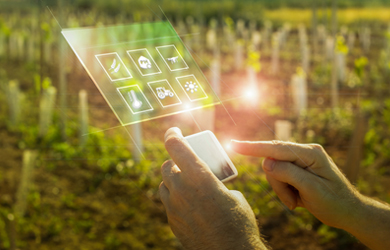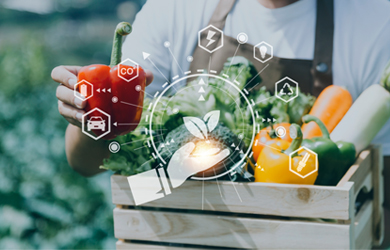Traceability: Why It is Essential for Modern Food System
The global agriculture industry is incredibly complex and always in evolution. Modern agriculture and food production, in particular, have been optimized for efficiency to meet the ever-increasing food demand. Now, they need to be reorganized to support the traceability requirements as well as sustainability demands.
What is Food Traceability
How would you feel to know that lettuces in your burgers come from the Nilgiri mountain of South India?
Would you be glad to know that most coffees are sourced from Brazil which accounts for 40% of the world’s coffee supply?
How can a farmer differentiate different types of seeds of the same crop to get a high yield?
These are all possible due to food traceability.
Today, consumer demand has entirely disrupted the agriculture market. A rapid rise in the world’s population has caused the demand for food to skyrocket. At the same time, consumers expect all-year-around availability of international products. Moreover, these consumers are increasingly looking for food companies that meet their precise standards in terms of sustainability, food origin, and humane livestock treatments.
To ensure efficiency in the agriculture industry, there needs to be traceability through all the steps of the process – from farmers planting and harvesting the crops to grocers and retailers putting the finished products on the shelf.
Why is Traceability Important for Farmers?
Food plays a key role in human societies and is essential to the well-being of people and the planet. A transformation approach rooted in technological investments, government initiatives, and partnerships has brought monumental shifts in food production.
However, the world has not been generally making significant progress either towards ensuring access to safe and sufficient food for all people all year round or eradicating all forms of nutrition. About one-third of the global food production is wasted while the prevalence of undernourished increased to 9.9% in 2020 from 8.4 percent in 2019, according to the FAO of the United Nations.
Traceability provides a foundation to address many of today’s issues in the food system while contributing to the advantage of sustainable farming and precision agriculture. It helps makes what is currently invisible within the global food systems ‘visible’. The integration of modern technologies in food traceability also brings numerous benefits.
- Ensuring food production transparency
As the penetration of the internet maximizes across the globe, consumers are becoming more aware of food sources and their impact on their health. Therefore, they are calling for efficient food systems transparency that will help influence their buying decisions and reduce the risk of purchasing unethical or counterfeit food products. This is where traceability comes in. It helps meet these demands through in-depth tracking of supply-chain data.
- Preventing food safety issues
Agricultural companies today are leveraging traceability systems to more efficiently identify, isolate, and address food safety issues and their sources. This further helps the inspection processes in the subsequent food production cycle to reduce food waste and minimize the cost of product recalls.
- Optimizing the supply chain and reducing food loss
By identifying vulnerabilities in the supply chain such as determining food loss during the inspection process or in transit, traceability helps make food value chains more efficient. It also equips farmers with the necessary information to meet growing demand. Furthermore, disruptive technologies are making headway in food traceability that helps accelerate product processing and reduce spoilage costs.
- Validating sourcing claims to support sustainability
When it comes to sustainability, traceability holds a distinct promise in driving transformation in the food system. Improved traceability makes it easy to validate sustainability claims. Regulatory bodies can further hold agricultural companies accountable for their commitments and measure the social and environmental footprint of food production.
New Technologies for Food Traceability
Food traceability built on transformative technologies can create improved supply-chain visibility to provide food production transparency to consumers, improve food safety, and increase supply-chain efficiency while reducing fraud and food loss.
IoT Sensors for Real-time Tracking
Today, IoT sensors are emerging as a key technology for traceability which enables the identification of crop location in a supply chain and condition tracking such as temperature, pH, etc. These sensors can also be paired with autonomous farm equipment and machinery to collect comprehensive and consistent data about food products from farm to table.
Furthermore, the analysis of these data with AI & ML- driven agriculture management systems enables agricultural companies to maintain desired information about a product and its components through all production and utilization chains.
Product Identification Codes for Food Tracing
Automated identification technologies such as radio frequency identification (RFID), two-dimensional codes, and QR codes play an important role in food traceability. These codes allow faster data acquisition and recording processes than traditional means and provide up-to-date information in each product stage. As a result, consumers can access information from all previous stages of the food product, including the origin of food ingredients, the means and places of food production and process, and transportation and storage information.
Technology to Drive Food Traceability
Technology usage has been gaining much traction recently in the food supply system. It offers an ideal framework for recording the roadmap of food movement throughout every supply chain link. With accurate food tracing, technology can improve food safety and reduce food waste or loss. It also helps customer-facing businesses such as food retailers and restaurants in obtaining important information about their suppliers and the sources of their food. Such information aid in finding better prices, forming a strong relationship with suppliers, and reducing the overall supply chain costs.
What is the Food Traceability Outlook for 2023?
As regulatory bodies such as the FDA works to improve food safety mitigation and traceability efforts, agricultural companies and other businesses across the food industry need to understand the direction of technologies in various processes.
AI, and IoT as well as farm management software will only better the ability of these businesses to locate their products in the supply chain systems. It will further help them show the consumers traceability and recognition of sustainable practices and their impact on the planet.
FarmERP is one-stop solution to improve your agribusiness in terms of productivity and profitability in general and traceability in particular. Reach out to know more.





